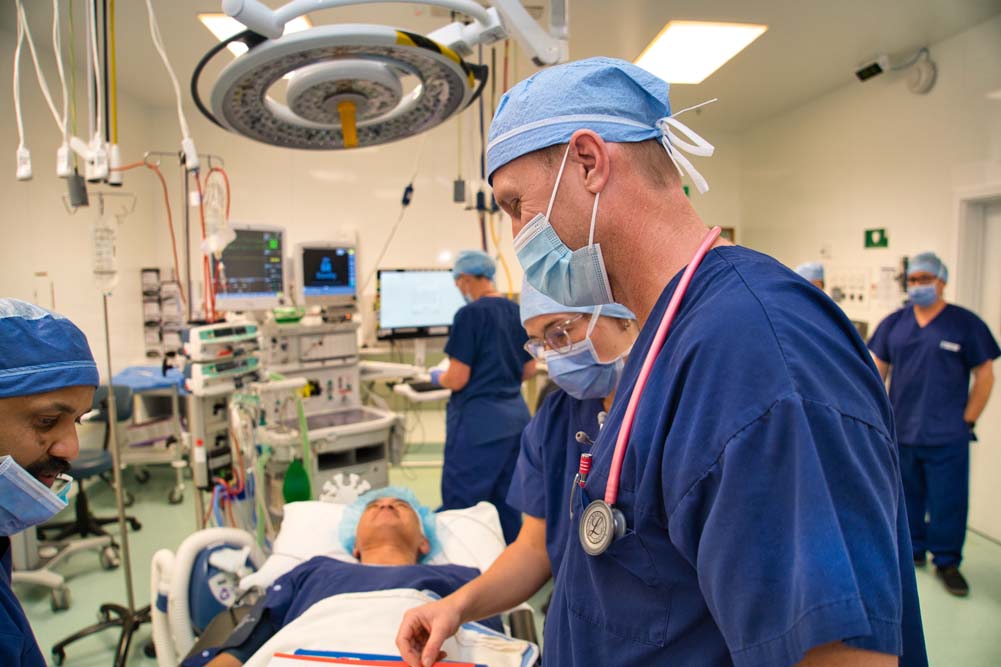Partial Nephrectomy



The aim of robotic-assisted laparoscopic partial nephrectomy is to remove the part of your kidney containing a suspected cancerous tumour. This is done by using very small, robotic instruments that allow precise surgery through tiny keyhole incisions in your abdomen.
A robotic-assisted Partial Nephrectomy is the removal of part of your kidney and surrounding fatty tissues for suspected cancer of the kidney through three to five keyhole incisions in your abdomen.
Your abdomen is then inflated with carbon dioxide to create a space for the specialist to work. Once the section of your kidney has been resected we may need to enlarge one of your incision sites to extract the section of kidney.
The incisions are then closed using absorbable stitches (which normally disappear within two-three weeks) and a local anaesthetic is injected into the incision sites for pain relief.
You may wake with a catheter inserted, this is to observe your urine output and will be removed once you are mobile. A drain will be inserted close to the area where the tumour was removed to prevent fluid accumulation and is removed once fluid stops collecting.
Your Specialist will review your medical history and discuss the surgery with you to confirm your consent.
An anaesthetist will discuss your options of anaesthetic, whether that be general or spinal. They will also discuss your pain relief plan for your post-operative recovery.
You may be provided with a pair of TED stockings to wear and you may be given a heparin injection to thin your blood. These help prevent blood clots, your medical team will decide whether you need to continue with these post-surgery.
You may wake with a catheter inserted, this is to observe your urine output and will be removed once you are mobile. A drain will be inserted close to the area where the tumour was removed to prevent fluid accumulation and is removed once fluid stops collecting.
We will encourage you to get up and about as soon as possible. This reduces the risk of blood clots in your legs and helps your bowel to start working again. You will sit out in a chair shortly after the procedure and shown deep breathing and leg exercises. We will also encourage you to start drinking and eating as soon as possible.
You will experience some abdominal discomfort especially at the incisions which may go on for several weeks, this can be managed by simple painkillers such as paracetamol. You will be given advice on your recovery at home and a copy of your discharge summary will be given to you as well as being sent to your GP. You will be provided with a prescription for any antibiotics or medication which can be filled by your local pharmacy.
Your pathology results of your kidney will be discussed by a multi-disciplinary team and you and your GP will be informed of the results at the earliest possible opportunity. We will normally arrange a follow-up appointment for you once the pathology results are available.